Killer whales are ocean dolphins and not whales, as the name would otherwise suggest. Also known as orca, they are the biggest and deadliest in the dolphin family.

Killer Whale
Orcinus orca
Killer Whale Scientific Classification
- Kingdom: Animalia
- Phylum: Chordata
- Class: Mammalia
- Order: Carnivora
- Family: Delphinidae
- Genus: Orcinus
- Species: Orcinus orca
Killer Whale Appearance

- Lifespan: 35-100 years
- Length: 20-26 feet long for males, 16-23 feet long for females
- Weight: 3 to 6.6 short tons
- Top speed: 34.8 mph – the second-fastest marine mammal
Killer whales are marine mammals with one of the most striking appearances among the dolphin species.
Their back is pitch black which travels to its sides, and there is a patch of white behind the eye area. This white area covers their undersides, too, spreading out a little in the belly region.
Their dorsal fins happen to be the same black color. Usually, a gray or white saddle patch is found behind the dorsal fin. The gray patch has unique shapes on each killer whale.
Their pectoral fins, also known as flippers, are large and rounded, resembling paddles. The tail fluke of the killer whale has a white patch on the underside. In general, males have larger fins than females.
Unfortunately, killer whales in captivity can have bent dorsal fins. Captive orcas spend about 70-80% of their time at the surface, which is a lot for them. The curved fin mainly happens if they live in warm temperatures, leading to collagen breakdown in the fins.
Did you know? Killer whales use different dialects to communicate among themselves.
Killer Whale Range & Habitat
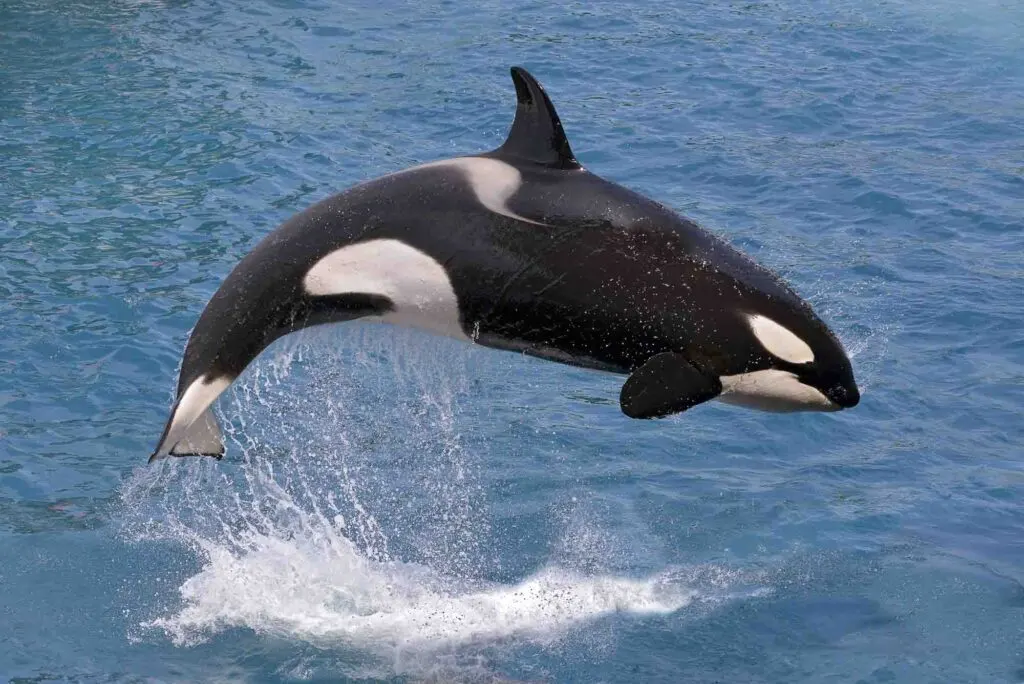
Orcas are present anywhere there is an ocean. Considering 70 percent of the earth is covered with the sea, killer whales are everywhere. The populations of killer whales might be second to humans and rats in terms of mammal distribution.
However, a deeper concentration of orca is observed in the coastal waters of Alaska, Norway, British Columbia (Puget Sound), and Antarctica. The orcas of the North Pacific Oceans are the most well-observed and studied.
Distribution
- Oceans: Atlantic, Pacific, Indian, Southern, and the Arctic.
Habitats
Marine Neritic | Marine Oceanic
Killer Whale Behavior and Lifestyle
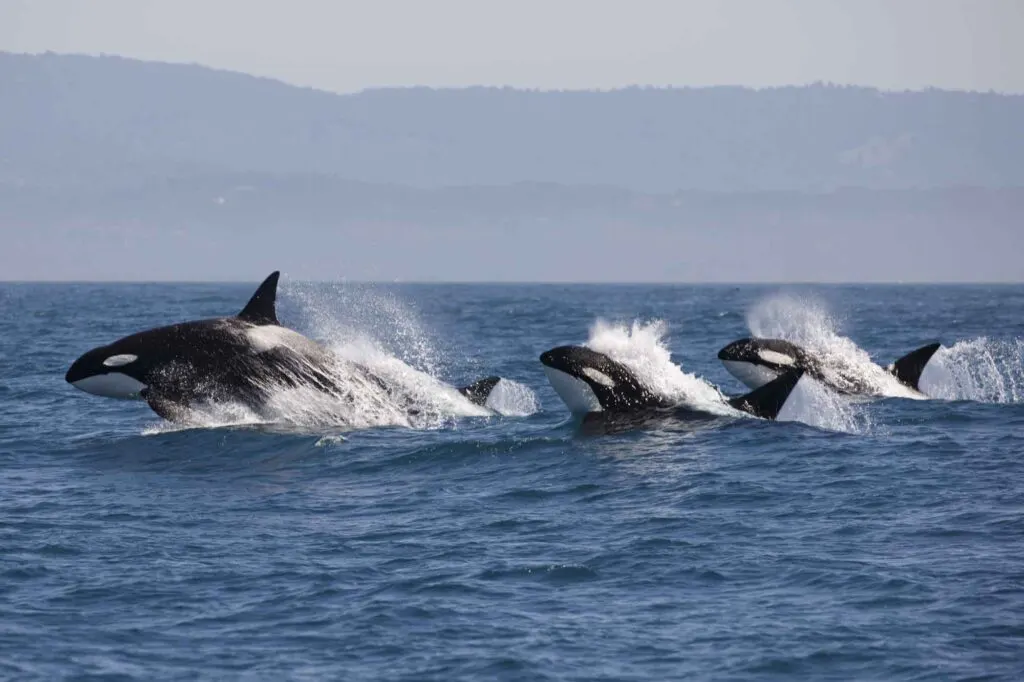
Killer whales form a group together known as pods. A pod can have anything from 5 to 100 members. The number of members reduces the more travel-oriented the pod is. On average, 50 members can be expected in a group.
A group of orca with more familiar bonds is called a clan. The group tends to have the same ancestry and communicate in the same dialect. The dialect is the exact kind of calls, whistles, and clicks orcas use to talk to each other.
In addition, individual whales tend to stay in their natal pods.
There is a complex social hierarchy within the group. However, it’s always female-led. The female orcas assert dominance via head-butting, slapping others’ tails, or even biting in case of serious disputes.
Killer Whale Diet
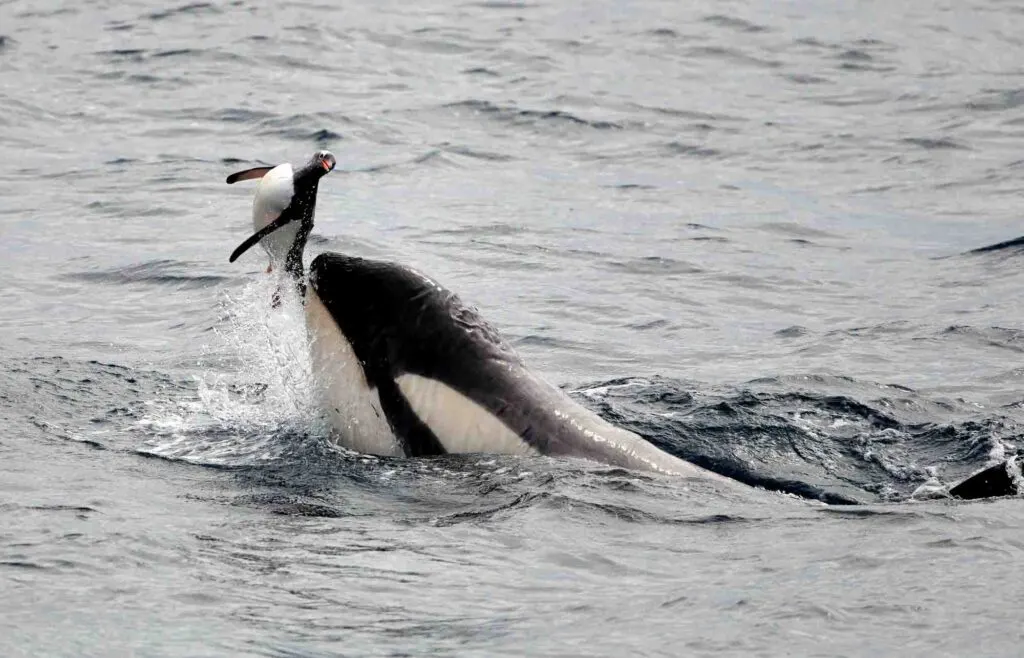
Orcas survive on anything found in or around the ocean. They eat the regular fish and squid of dolphins.
Additionally, they feast on leopard seals, sea otters, sea lions, sea turtles, porpoises, penguins, herrings, baleen whales, minke whales, gray whales, gulls, walrus, and many other animals.
They rarely hunt sperm whales or blue whales, the biggest animal in the world.
They have no fear or remorse about attacking whale species that would be considered bigger and larger than them. Orcas are the only species on record to have ever hunted the great white sharks and succeeded.
Killer whales use echolocation to find objects in the sea and identify orcas that are part of their pod.
Echolocation is a technique where dolphins let out sonic waves into the sea. They understand the nature of the object by how the sound bounces back to them.
Similar to helping them locate other orcas in the pod, echolocation helps them find their prey. Their echolocation skills are modified enough for them to even gather the flavor of their game.
After communicating with the pod, they strike the prey together. They have sharp teeth that easily tear apart their targets.
However, they lack molars, which are instrumental in scissoring and chewing food. So, some orcas hold the prey, while others deliver fatal blows. Then, they tear the prey into pieces they can swallow.
This is best demonstrated by how these toothed whales strike real whales. They slam into the whales, bite and pull on their sides and pectoral fins.
Some launch themselves to the whale’s back, putting a lid on the whale’s blowhole and cutting off the whale’s access to the air. Once incapacitated, they tear into the whale until nothing is left.
Killer Whale Reproduction and Mating
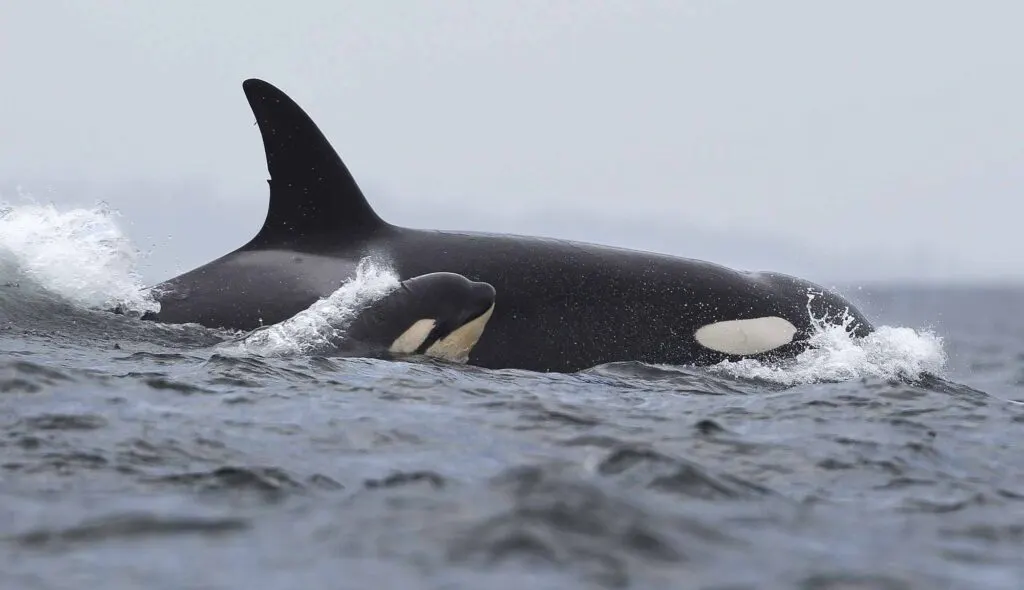
Orcas begin breeding when they are 10 to 18 years old. A single baby is born after a 15 to 18 months gestation period. An instance of a twin being born has only been recorded once in history. Adult orcas give birth every 3 to 10 years.
The resident whales have either pods or clans. They rely on each other to raise the babies. Female adolescent killer whales often look after the young ones.
The mother gives birth to a baby about 8.5 feet long and 265 to 353 pounds. The baby orcas require nursing for a year before they can eat solid foods as their teeth grow.
The killer whale’s social structure has striking similarities with humans, with a more matriarchal base. The babies grow up and live with their mother for life. So do the babies of their daughters.
Orcas are polygamous. They have more than one partner and do not mate for life. Female killer whales experience menopause at about 45 to 55 years.
Killer Whale Conservation Status
In 2008, the IUCN changed its assessment of the orca’s conservation status from conservation dependent to data deficient, recognizing that one or more orca types may actually be separate, endangered species.[1]
Killer Whale Predators and Threats
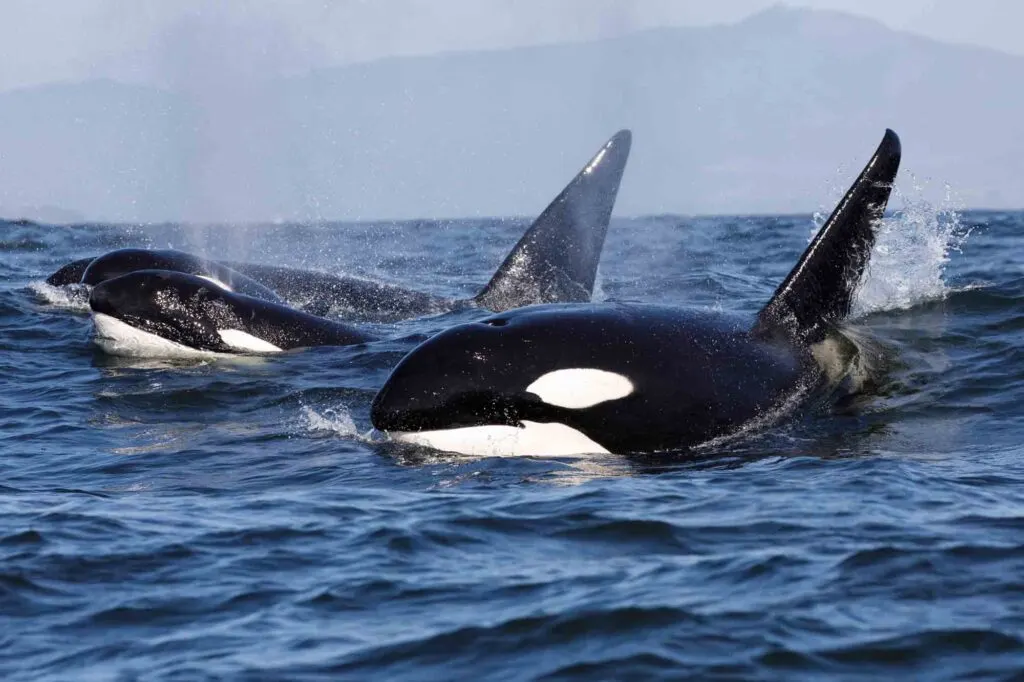
The killer whale is an apex predator of the oceans. This means they are the top of the top, the ruler in their immediate environment. No other ocean animal can beat them, not with orcas’ intelligence and incredible teamwork.
However, the orca populations of the southern ocean face threats in the form of a lack of prey and toxic waste that find its way into the water.
Killer Whale Facts
Here are some interesting facts about killer whales:
- Killer whales, beluga whales, narwhals, short-finned pilot whales, and humans are the only known species that undergo menopause.
- Although there is currently one species of killer whale (Orcinus orca), research suggests the different types of orcas should be split: resident killer whale, transient killer whale, and offshore killer whale.
- Orcas can’t smell. They lack the organ and the system in their brain that helps identify scents.
- Sailors used to call orcas whale killers after witnessing them hunting down large whales. Eventually, the name caught on and turned into killer whales to roll off the tongue easily.
- Orcas can unihemispheric sleep. This means they can shut down half of their brain at a time, allowing them to benefit the sleep while still maintaining breathing, body temperature, and surrounding awareness.

Quinn Patrick
Monday 19th of September 2022
The front fins of an Orca are not called dorsal fins. Those would be the flippers. Maybe I am reading it wrong but it doesn’t make sense to me: “Their front fins, called dorsal fins, happen to be the same black color. Usually, a gray spot is found on the back of their right dorsal fin.”
Wildlife Explained
Tuesday 20th of September 2022
Hey Quinn, thanks for your comment. I updated the text for clarity. :)